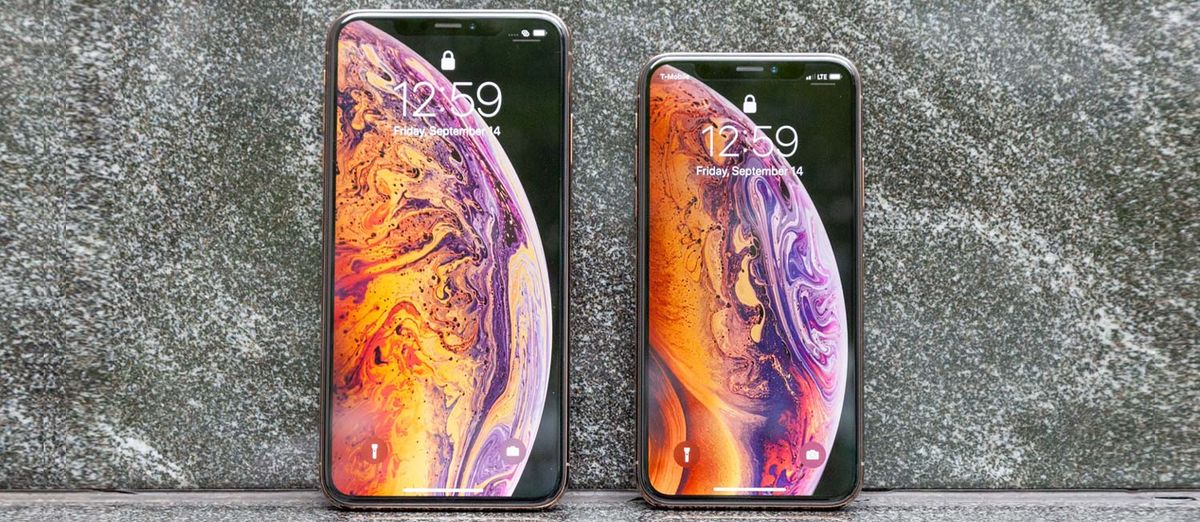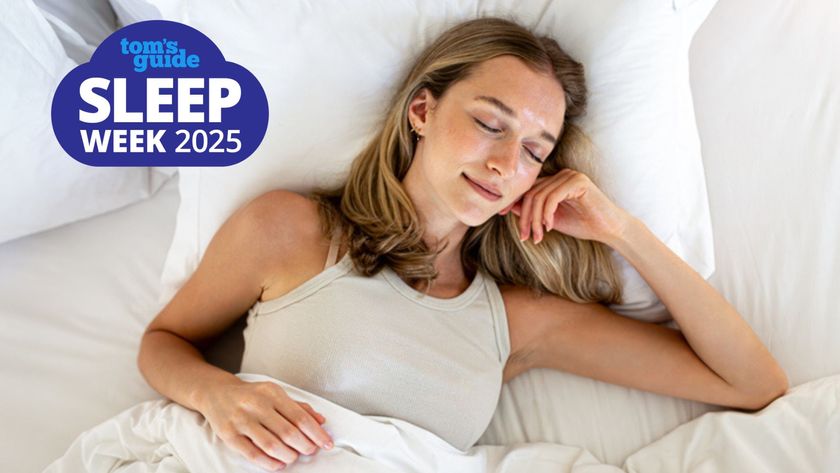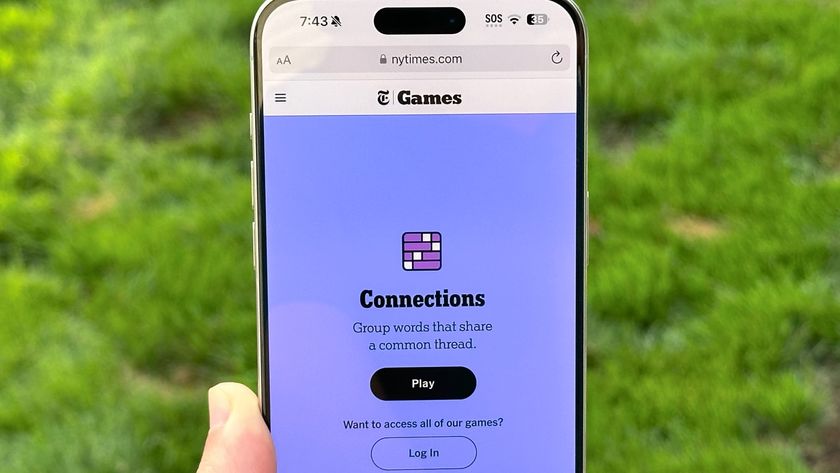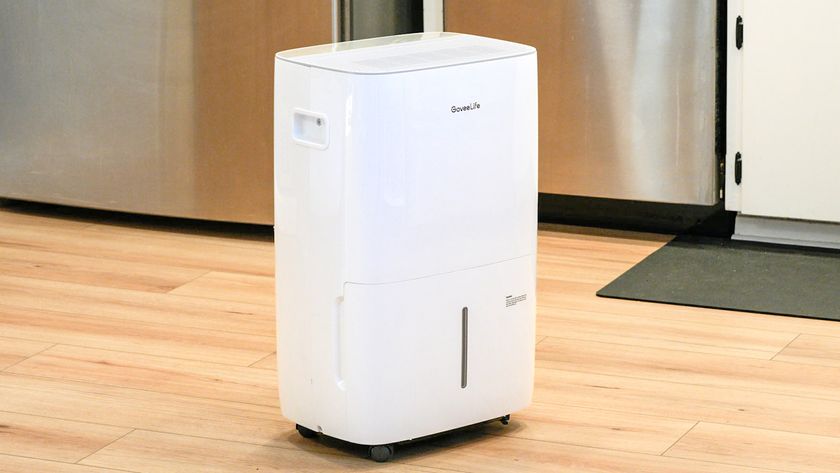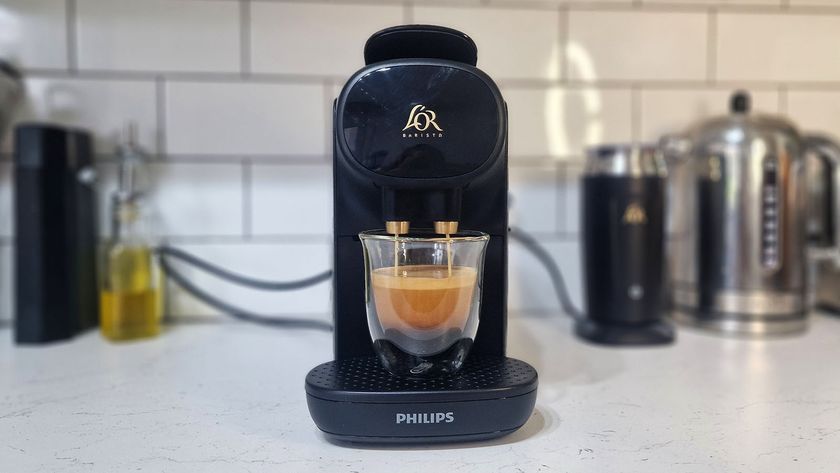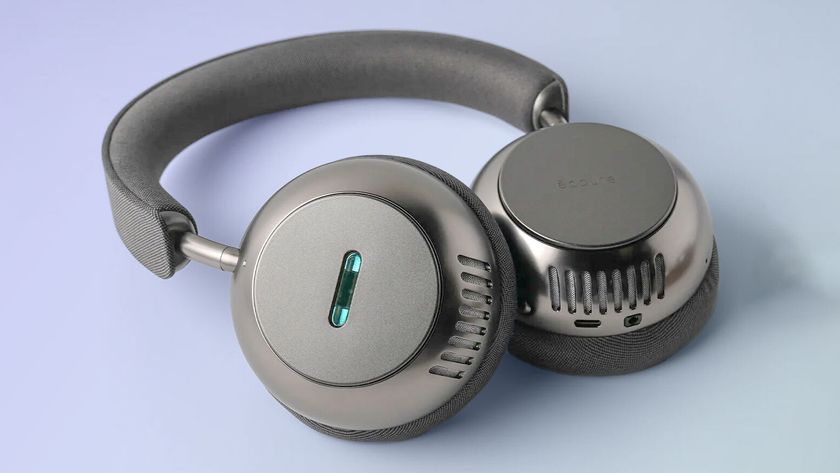Tom's Guide Verdict
While pricey, the iPhone Xs Max delivers an immersive 6.5-inch display, blazing performance and excellent cameras in an elegant design.
Pros
- +
Massive and beautiful OLED display
- +
Superfast A12 Bionic processor
- +
Longer battery life than iPhone Xs
- +
Improved cameras with Smart HDR and better bokeh
- +
Split-view mode in certain apps
- +
Gigabit LTE
Cons
- -
Fast charging still costs extra
- -
More storage should come standard
Why you can trust Tom's Guide
The iPhone 11 Pro and iPhone 11 Pro Max are Apple's flagships now and top our best phone list, but you can still get the older iPhone XS and iPhone XS Max at a discounted price. Of the two, I prefer the 6.5-inch iPhone XS Max ($999/£999), thanks to its ginormous screen and longer battery life.
The 5.8-inch iPhone XS ($899/£899) has all the same enhancements as its supersize sibling, including a fast A12 Bionic processor that blows away most Android phones, as well as improved cameras with Smart HDR and impressive bokeh controls.
To see how Apple's 2018 iPhones compare, check out our iPhone XS vs iPhone XS Max vs iPhone XR face-off.
iPhone XS and iPhone XS Max Cheat Sheet
- The cameras are good, and the new Depth Control for portraits works well.
- Apple's A12 Bionic chip is once again faster than any Android phone.
- The iPhone XS Max is more compelling than the regular iPhone XS because of its larger 6.5-inch screen and longer battery life.
- The lack of USB-C fast charging out of the box for both phones is a bummer.
- The iPhone XS Max and iPhone XS are worth upgrading to if you own an iPhone 7 or earlier device, but some may prefer the cheaper iPhone XR or new iPhone 11.
iPhone XS and iPhone XS price and deals
The iPhone XS starts at $899/£899 for 64GB of storage. We'd prefer the 128GB you get with the Galaxy Note 9's base model. But you can upgrade to 256GB and 512GB on the iPhone XS for $1,049/£1,049 and $1,249/£1,249, respectively. The iPhone XS Max starts at $999/£999 for 64GB, and goes up to $1,149/£1,149 for 256GB and a whopping $1,349/£1,349 for 512GB.
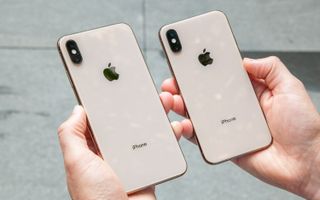
For our money, we would go for 256GB if possible. Opting for 512GB of storage will be overkill for most people when you factor in how much you can store in iCloud Storage.
When you break down the phone's price to monthly payments (available in the US only), the cost varies by carrier, but figure about $42 a month for the iPhone XS and $46 for the iPhone XS Max. Be sure to check out our frequently updated best iPhone XS deals to make sure you get the best price. We're also tracking the best Black Friday deals and best Cyber Monday deals.
Design: Regular and Supersized
As someone who carried the 5.5-inch iPhone 7 Plus for more than a year before moving on to the 5.8-inch iPhone X, the iPhone XS Max feels familiar in my hands and pocket. Note I didn't say that it feels great. That's because the iPhone XS Max is about the same size as the larger iPhone 7 Plus and iPhone 8 Plus while packing in a larger 6.5-inch display.
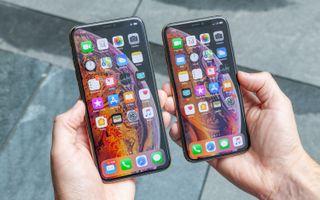
The good news is that you get more screen real estate in the same size chassis as Apple's Plus handsets, minus the bezels and Home button. The bad news is that this is definitely not a skinny-jeans phone (not that anyone should ever wear them), and that you'll need two hands to use this 7.3-ounce behemoth comfortably. By comparison, Samsung's Galaxy Note 9 is a lighter 7.1 ounces but it's also taller and a little bit thicker.
The 5.8-inch iPhone XS is better optimized for one-handed use, as it's shorter and narrower than the iPhone XS Max while weighing a lighter 6.24 ounces.
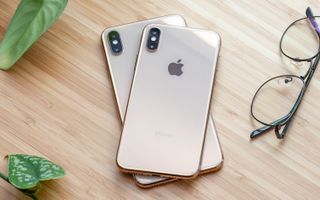
Whichever iPhone model you choose, it looks gorgeous in gold. I like the way the glass back plays with ambient light to deliver different shades, while the shiny color-matched stainless steel adds a hint of bling. Apple says this phone has the most durable glass ever on a smartphone, but we have not yet been able to test that claim. (The iPhone X finished third the last time we tested smartphone durability.)
Early drop tests on the iPhone XS look promising, though. YouTuber TechSmartt dropped the handsets from pocket height, head height (6 feet) and while standing on a picnic table with arm extended, and Apple's phones can through without cracking.
Extended warranty company SquareTrade gave the iPhone XS a high breakability score following its drop tests, but it started at an unrealistic height of 6 feet.

Apple has upped the durability in another way, as the iPhone XS and XS Max are both IP68 rated for dust- and water-resistance. That means they can withstand being submerged in 2 meters of water for up to 30 minutes, compared with 1 meter of water for the same amount of time on the iP67-rated iPhone X and iPhone 8.
Display: The Max Steals the Show
Bigger and bolder than anything Apple has ever put in a phone, the iPhone XS Max's OLED display is a sight to behold. Not only is it ginormous at 6.5 inches, you can use split-view mode in various Apple apps, such as Mail and Calendar. The phone looks and feels more like a desktop. However, the Galaxy Note 9 can run two separate apps side by side, including third-party apps.
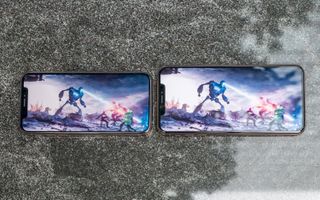
When Danny Rand started running down the street with yellow and red neon lights toward a speeding truck, and then sheared off its front with a punch of his glowing Iron Fist, I felt like I was in Chinatown. I could make out all the creases in his yellow face mask, and the resulting sparks from the punch really popped.
The Super Retina Displays on both of the new iPhones are searingly bright, with the iPhone XS' registering 611 nits on our light meter and the iPhone XS' Max hitting 606 nits. (The Galaxy Note 9's 6.4-inch screen reached 604 nits.) Their OLED panels are pretty colorful, too, covering 123 percent of the sRGB color gamut. The Note 9's screen, however, reaches 224 percent.
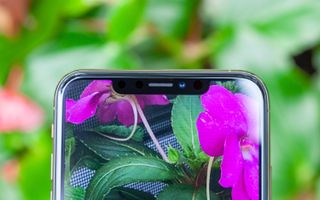
The hues on the new iPhones' screens are more accurate, however, as they achieved a Delta-E rating of 0.25 and 0.22 for the XS and XS Max, respectively. A score of 0 is perfect. The Galaxy Note 9 fared slightly worse on this test with a Delta-E rating of 0.34.
iPhone XS and iPhone XS Max Specs
| Row 0 - Cell 0 | iPhone XS | iPhone XS Max |
| Starting Price | $999/£999 | $1,099/£1,099 |
| Processor | A12 Bionic | A12 Bionic |
| Screen | 5.8-inch OLED (2436 x 1125 pixels) | 6.5-inch OLED (2688 x 1242 pixels) |
| Storage | 64GB, 256GB, 512GB | 64GB, 256GB, 512GB |
| Face ID | Yes | Yes |
| Rear Camera | Dual 12MP wide (ƒ/1.8) and telephoto (ƒ/2.4) | Dual 12MP wide (ƒ/1.8) and telephoto (ƒ/2.4) |
| Front Camera | 7MP, ƒ/2.2 | 7MP, ƒ/2.2 |
| Battery Life | 9:41 | 10:38 |
| Metal Frame | Stainless steel | Stainless steel |
| Colors | Gold, Silver, Space Gray | Gold, Silver, Space Gray |
| Weight | 6.2 ounces | 7.3 ounces |
| Size | 5.7 x 2.8 x 0.3 inches | 6.2 x 3.1 x 0.3 inches |
Camera: Catching Up to (and Sometimes Beating) Pixel 2
If there's one area where the Apple needed to improve the iPhone, it's the camera. Google's Pixel 2 beat the iPhone X in our face-off, especially in low light. The iPhone XS and XS Max even the score with dual 12-MP cameras that have bigger and deeper pixels that let in up to 50 percent more light without sacrificing sharpness.
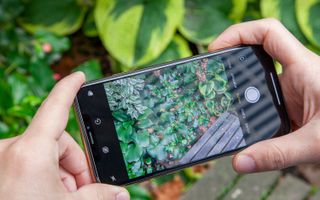
Examine this photo in a bar we shot on the iPhone XS, Pixel 2 XL and Galaxy Note 9. The Note 9's shot is the most vibrant, but the iPhone X delivers stunning detail when you zoom in, allowing us to read the text on the bottles. Plus, the upper-left area of the image didn't get blown out as it did on the other two phones.
The iPhone XS also benefits from a new Smart HDR mode, which Apple says takes advantage of faster sensors, an enhanced ISP and advanced algorithms to offer more highlights and shadow details in photos. I saw the improvement in shots like this, where I could see more of the eagle in the iPhone XS that got lost in the original iPhone X's image.
In this shot of colorful cupcakes, the iPhone XS once again delivers more detail, especially when you zoom in to see the frosting and the sugar crystals. The Note 9's shot is a close second because it's simply brighter and a bit more inviting.

The iPhone XS now gives you Depth Control, so you can tweak the depth of field after you shoot. This worked extremely well when I captured this picture of my colleague Adam. Using a slider, I could adjust the blur effect so that I could see the trees and some passersby behind him or make it so that I could see only hints of those objects.
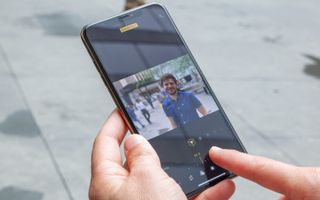
Does the iPhone XS beat the Pixel 2 XL at portraits with its two rear cameras? Not quite. In this shot of my colleague Caitlin, the iPhone XS' picture looks a bit too warm, while the exposure on the Pixel 2 XL looks more natural given the lighting conditions. Plus, you can make out more detail in her hair and her face looks brighter. The Note 9's shot looks great, but the left side of Caitlin's face looks blown out.
The iPhone XS' camera is good at close-ups, too, but the Pixel 2 XL edged it out. While the iPhone captured a brighter photo of this yellow flower, Google's camera let us see the specs in the leaves better, and the green leaves around it look more saturated.

In one more low-light test, the iPhone XS took the brightest shot of this clock in Grand Central, and there's less noise on the signs in the background as you zoom in. But the gold resonates more on the clock in both the photos from the Pixel 2 XL and the Note 9.
The 7-MP TrueDepth front camera on the iPhone XS and XS Max both benefit from the same advanced bokeh controls and Smart HDR. The Stage Light effect, which blacks out everything but your face, is still hit or miss. But I thought the Contour Lighting effect did its job without looking like too-heavy makeup.
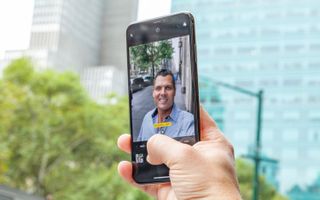
Performance
The A12 Bionic processor is the first 7-nanometer chip in a phone, but what's more important is what that enables. Apple claims that the two high-performance cores in this 6-core processor are up to 15 percent faster, and that the 4-core GPU is up to 50 percent faster.
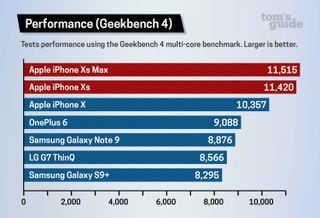
Before we even get to the benchmark scores, it's important to note that Face ID is faster on the iPhone XS and the iPhone XS Max than on the iPhone X. That's because of improved algorithms in iOS 12 and the speedier A12 chip. It's just a half-second difference or so, but it's noticeable, and I appreciate being able to unlock my phone faster than on last year's iPhone X.
The iPhone XS and the iPhone XS Max also shined in other real-world tasks, such as video editing. It took Apple's phones just 39 seconds to transcode a 2-minute 4K clip to 1080p. The Galaxy S9 took 2:32, and the OnePlus 6 finished in 3:45.
How about opening apps? The iPhone XS took 20.8 seconds to open Fortnite, 4.9 seconds for Pokémon Go and 6.17 seconds for the Asphalt 9 racing game. The Note 9 was slower across the board at 35 seconds, 7.2 seconds and 9.1 seconds, respectively. The older iPhone X was also slower than the iPhone XS at 26, 7.2 and 10 seconds for the above apps.
MORE: The Best Smartphones Available Right Now
On Geekbench 4, which measures overall speed, the iPhone XS Max scored 11,515, while the iPhone XS hit a slightly lower 11,420. Those scores smoke the fastest Android phones around, including the Snapdragon 845-powered Galaxy Note 9 (8,876) and the OnePlus 6 with 8GB of RAM (9,088).
To test graphics performance, we ran 3DMark Slingshot Extreme, and the iPhone XS Max scored 4,339 and the iPhone XS hit 4,244. Both of those numbers are below the Galaxy Note 9's 4,639, but they're a lot higher than the 2,227 turned in by the older iPhone X.
In a separate graphics benchmark that has a more intense workload, GFX Bench 5, the iPhone XS Max crushed the the Galaxy Note 9. Apple's phone scored higher Aztec Ruins test (1,604.7 frames to 851.7 frames) and on the Car Chase test (1,744.44 frames to 1,103 frames).
Neural Engine and AR
The next-generation Neural Engine inside the A12 Bionic on the iPhone XS is now up to nine times faster than what the A11 offered, which can give a sizable boost in augmented-reality apps. For instance, in the new elemenTao puzzle game, the iPhone XS Max was faster to load the experience than on the iPhone X, and it was able to scan for and place the virtual world on a table more quickly.
From there, I could zoom in on a landscape, complete with clouds, mountains and water, and use the wind and even bolts of lightning to move a ball toward its goal. I also had a blast playing Smash Tanks, which allowed me to fling tanks around slingshot-style. The graphics rendered smoothly even when there were big explosions.
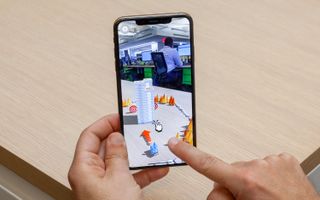
I was also completely engrossed in the game when I tried shopping on the Magnolia Market website and pulled up a leather bag I could place right in front of me. I could make it bigger or smaller with pinch-to-zoom, and get up real close to see the stitching and zipper. Apple's usdz file format makes this a reality.
I still think AR apps could be more compelling, though more are on the way using Apple's ARKit 2.0. For instance, the HomeCourt app leverages your iPhone's camera to show you how many basketball shots you make and miss during a given session, and a multiplayer Galaga game from Directive Games that lets you and some friends shoot alien spaceships in the same room at the same time. It makes Head's Up feel like Rock, Paper, Scissors.
Audio: Sweeter Stereo
The audio boost in the iPhone XS and iPhone XS Max is so good that you'll think twice about connecting to a Bluetooth speaker. Apple says it widened the stereo sound to deliver more detail, and I immediately appreciated the difference when I put the iPhone X and the iPhone XS side by side.
MORE: Smartphones with the Longest Battery Life
When listening to Imagine Dragon's "What It Takes," Dan Reynolds' vocals sounded much more present on the iPhone XS . On the iPhone X, his voice seemed to recede into the background. The drums had more punch on the new phones, too.
Battery Life and Charging
Based on a teardown of the iPhone XS and XS Max, the iPhone XS packs a 2,658 mAh battery, which is smaller than the 2,716 battery in the iPhone X. The iPhone XS Max has a larger capacity of 3,174 mAh, based on regulatory filings.
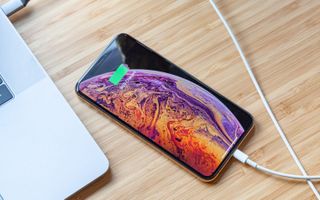
The iPhone XS Max the phone to get if you want longer endurance. On the Tom's Guide Battery Test, which involves continuous web surfing over LTE on 150 nits of screen brightness, the iPhone XS Max lasted a good 10 hours and 38 minutes. That's above the category average but below the Galaxy Note 9's time of 11:16. The Pixel 2 XL lasted an even longer 12:09.
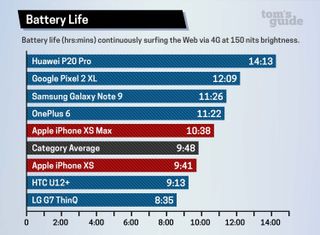
The iPhone XS turned in a just-OK runtime of 9 hours and 41 minutes. That's shorter than the iPhone X's endurance, with that phone lasting 10 hours, 49 minutes when we tested it last year. When we retested the original iPhone X recently as part of our battery testing for the new phones, that time fell to 9 hours, 51 minutes, which could be because the websites we use in our browsing test are using more Javascript and other code than before, putting stress on the phone's bqttery.
While the iPhone XS supports faster wireless charging, Apple still doesn't include what you need for fast wired charging in the box, even though every other Android phone maker does with its flagships.
So, if you want to charge your iPhone XS or iPhone XS to 50 percent in 30 minutes, you'll have to invest in a USB-C power brick ($49) and USB-C-to-Lightning cable ($20). Apple should have made the switch to native USB-C with these iPhones or at the very least include an accessory.
Some iPhone XS and iPhone XS Max owners are reporting a bug where the phones will not charge when the devices are plugged in and the screen is off. However, a fix should be coming with the iOS 12.1 update.
iOS 12: New features added, including Apple News+, Apple Arcade and Apple TV+
iOS 12 has a lot of enhancements under the hood, but the one I appreciate most is Instant Tuning, which is, essentially, easier control over notifications. If you keep getting alerts from an app that you find annoying, you can disable them right from the Notification screen.
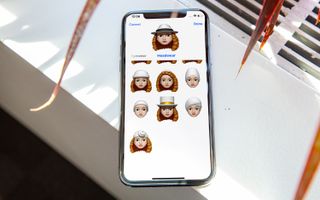
If you're into Animoji or Memoji, you can have lots of fun with your avatar on the new phones. The iPhone XS and XS Max can map 50 facial movements with its TrueDepth camera, and you can insert yourself in outgoing messages. You'll also be able to use Animoji and Memoji during FaceTime chats, but a promised group-calling feature with up to 32 people isn't coming until later.
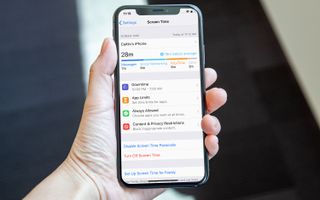
Other iOS 12 highlights include Screen Time for keeping better tabs on your app usage, smarter search in photos and the ability to schedule Do Not Disturb mode.
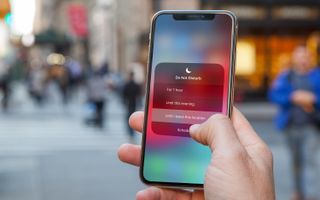
But I'm most excited by Siri Shortcuts, an app that will let you accomplish multiple tasks (including those using third-party apps) with a single phrase. For instance, saying "I’m going home" could turn on your Nest thermostat, text "I’m coming home" to a loved one and open up the Maps app to provide directions.
iOS 12.1 brings several new features. These includes Group FaceTime, which allows you to conduct video calls with up to 32 people. And there's now Depth Control in real-time preview, which lets you adjust the bokeh effect in portraits as you're shooting.
Dual SIM support is a welcome upgrade for travelers, professionals or anyone who wants to use two phone numbers on the same iPhone. And there are 70 new emoji in iOS 12.
With iOS 12.2, the iPhone XS and XS offer access to the new Apple News+, which lets you subscribe to more than 300 magazines and The Wall Street Journal for $9.99 per month.
Other services coming soon include Arcade Plus for enjoying 100+ premium games per month for $9.99, Apple Channels (think Amazon Channels for iOS) and the premium Apple TV+ service this fall.
Gigabit LTE and Dual-SIM
The iPhone XS and XS Max now support Gigabit-class LTE, thanks to a new enclosure that has additional antennas that enable what's called 4x4 MIMO. The result was blazing speeds on T-Mobile's network using the Speedtest.net app. Downloads reached as high as 103 Mbps on the iPhone XS and 96.9 Mbps on the iPhone XS Max. The iPhone XS Max averaged 58.2 down, and the iPhone XS averaged a faster 67.2 Mbps.
Uploads on the iPhone XS averaged 18.6 Mbps; the iPhone XS Max pulled ahead here with 25.4 Mbps. By comparison, the older iPhone X averaged just 15.5 Mbps down and under 6 Mbps uploads.
Third-party testing by SpeedSmart.net found similar LTE results, with the iPhone XS offering nearly double the download rates on some networks.
In side-by-side tests against the Galaxy Note 9, the iPhone XS Max delivered slower download speeds but slightly faster uploads. We ran Speedtest.net multiple times in three different locations in New York City, and the iPhone averaged 45 Mbps downloads and 21.8 Mbps uploads, compared to 53.8 Mbps down and 18.6 Mbps up for the Galaxy.
iPhone XS and XS Max vs iPhone XR
I know what you're thinking. Why spend $999 on the iPhone XS or $1,100 on the iPhone XS Max when you can get the 6.1-inch iPhone XR for just $750? There's a very good case to be made for this more affordable option.
The iPhone XR offers many of the same top features as the iPhone XS and XS Max, including the same powerful A12 Bionic processor, great camera quality (including portraits) and Face ID. Plus, the iPhone XR lasted longer on our battery life test at 11 hours and 26 minutes, compared to 10:38 and 9:41 for the iPhone XS Max and XS.
Apple offers the iPhone XR in six colors, while the iPhone XS comes in three finishes.
On the other hand, the XR's LCD screen doesn't offer the same black levels or wide viewing angles as the OLED panels on the iPhone XS or XS Max. You also don't get two rear cameras on the iPhone XR for 2x optical zoom.
Bottom Line
The iPhone XS and iPhone XS Max are among the best phones you can buy, and if you've been holding off on upgrading your iPhone 7 or iPhone 6s, either one of these handsets will feel like a huge leap forward. The cameras are miles better — especially in low light — and the A12 chip provides a big speed boost.
Between the two, I'd opt for the iPhone XS Max because of its bigger and more immersive 6.5-inch display and longer battery life, but the iPhone XS is the new iPhone to get if you want something more one-hand friendly.
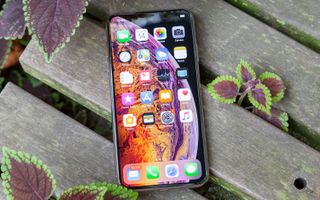
If you're deciding between iOS and Android, the $999/£899 Galaxy Note 9 is an excellent alternative to the iPhone XS Max, offering an even more colorful display, double the storage and the handy S-Pen. The Google Pixel 3 XL is the ideal choice if you want an even better camera than the iPhone XS along with a big display.
For those sticking with the iPhone, many will prefer the cheaper iPhone XR, which offers nearly all of the great features in the iPhone XS and iPhone XS Max for $749/£749. But if you want a superior OLED display, dual rear cameras and less bezel, I'd splurge on the iPhone XS Max for it's even bigger screen.
Credit: Tom's Guide
Mark Spoonauer is the global editor in chief of Tom's Guide and has covered technology for over 20 years. In addition to overseeing the direction of Tom's Guide, Mark specializes in covering all things mobile, having reviewed dozens of smartphones and other gadgets. He has spoken at key industry events and appears regularly on TV to discuss the latest trends, including Cheddar, Fox Business and other outlets. Mark was previously editor in chief of Laptop Mag, and his work has appeared in Wired, Popular Science and Inc. Follow him on Twitter at @mspoonauer.
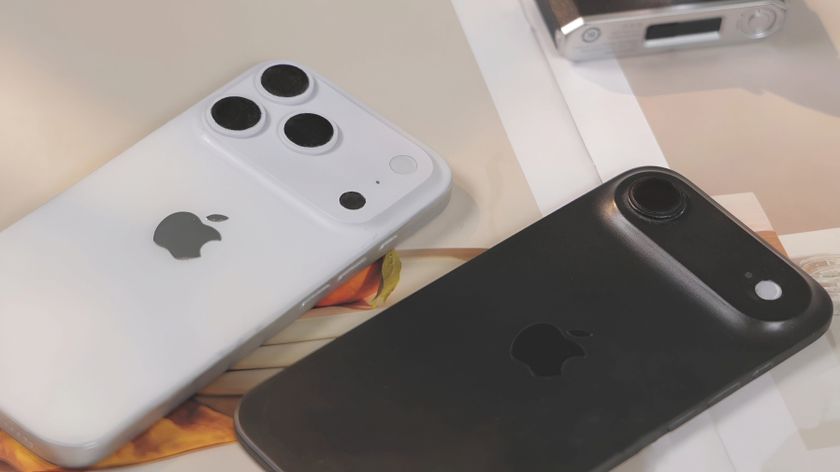
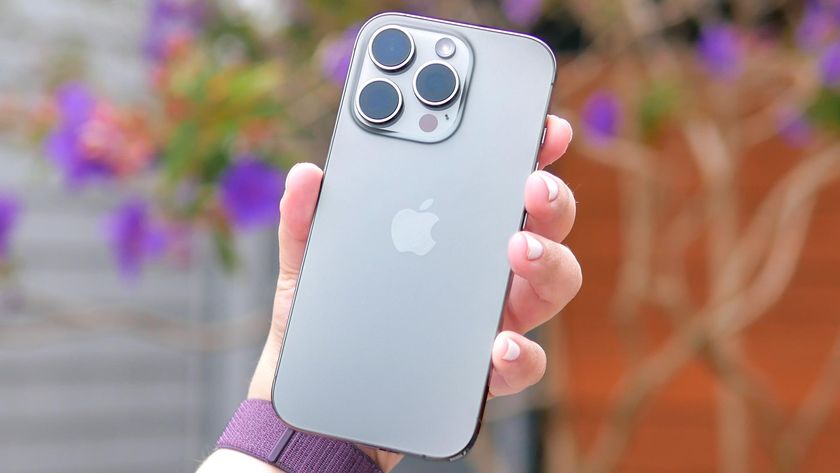
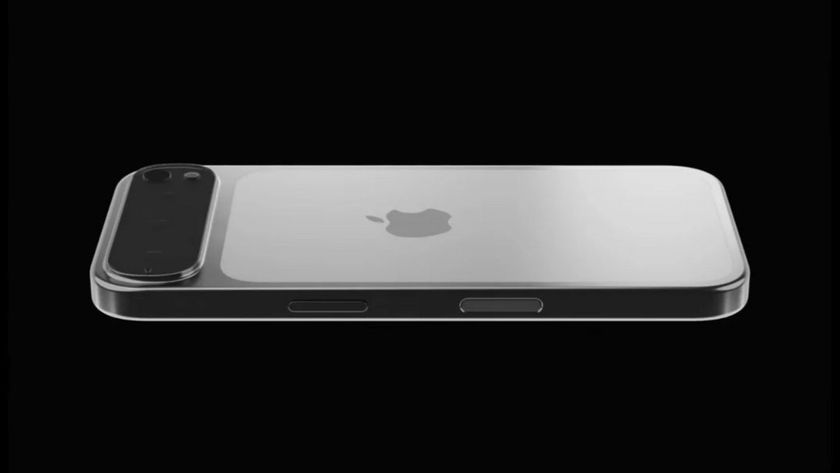
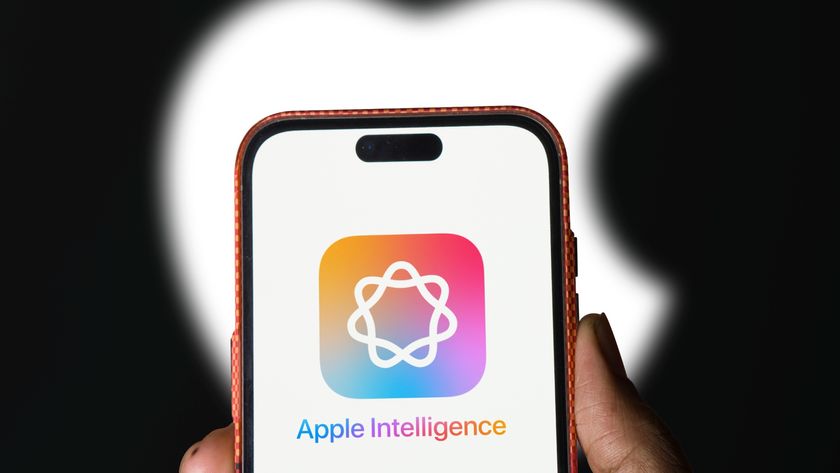
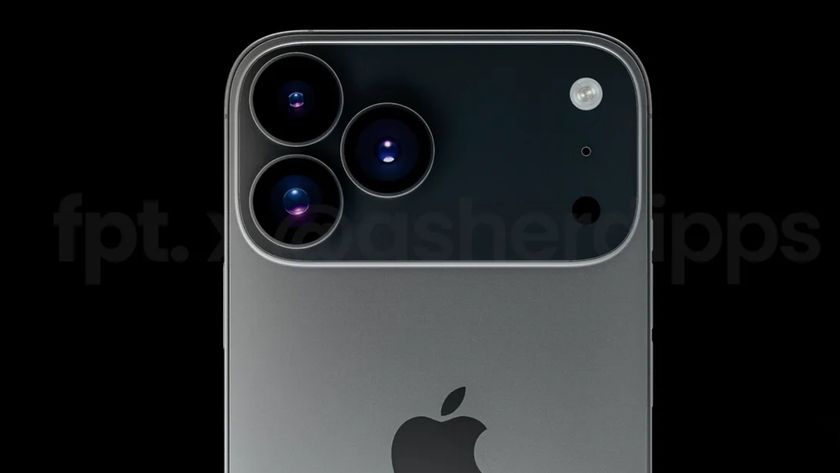
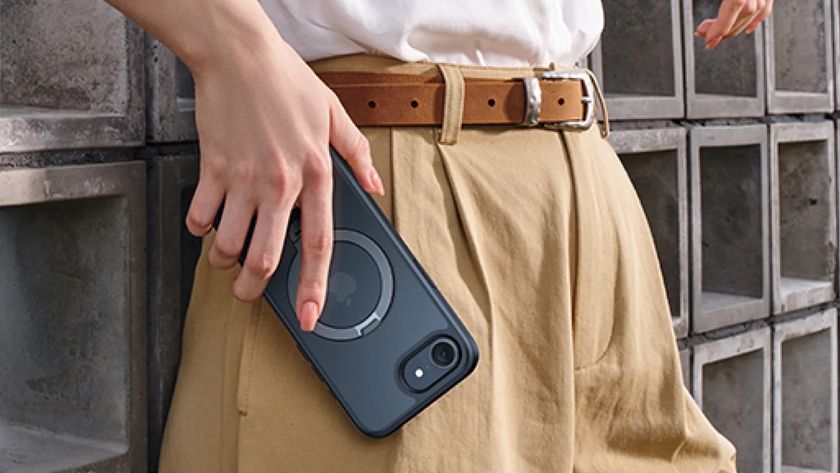
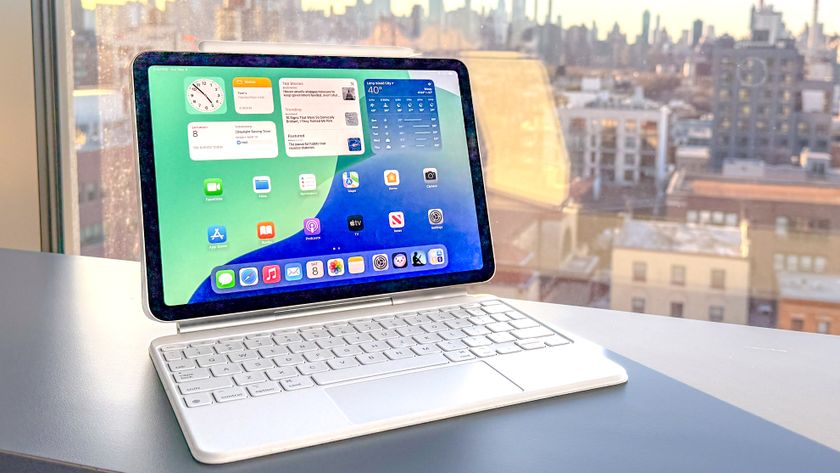
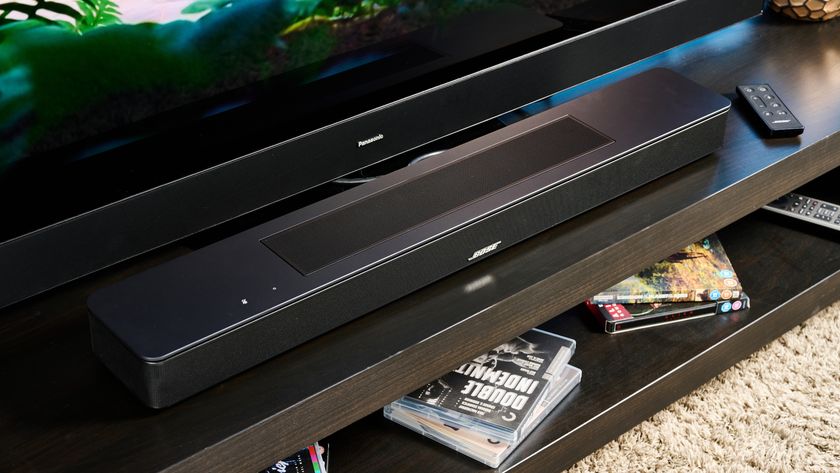
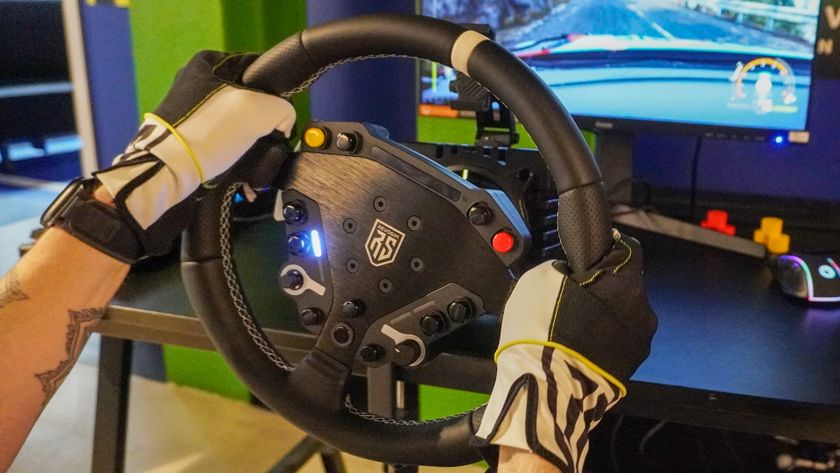
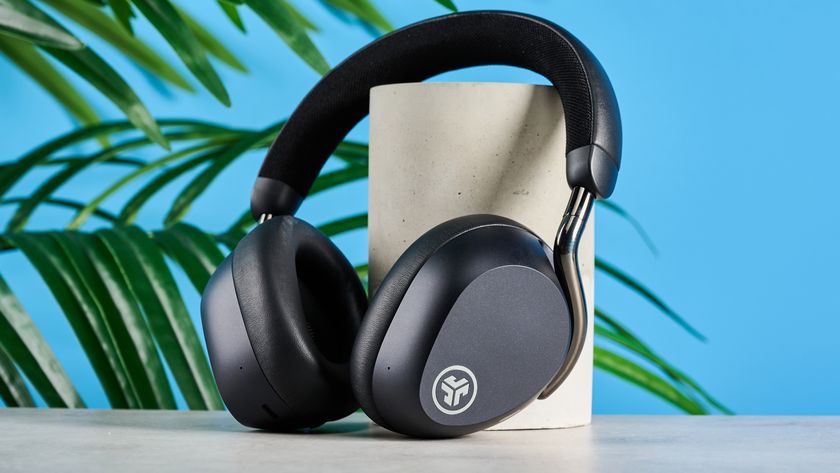
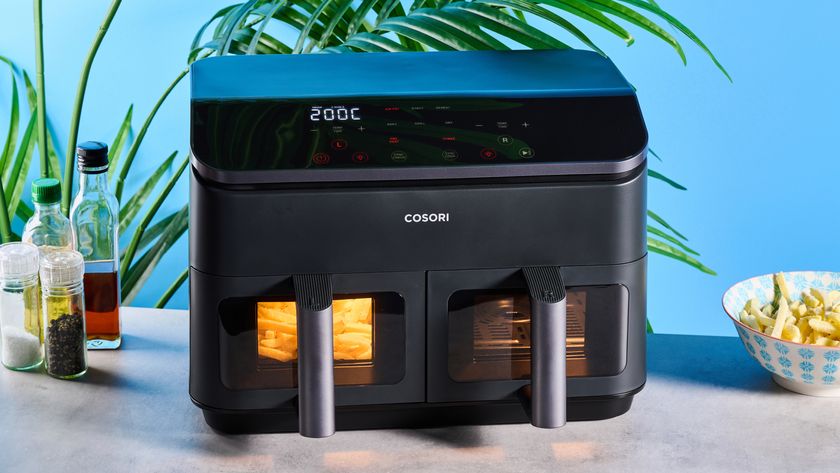
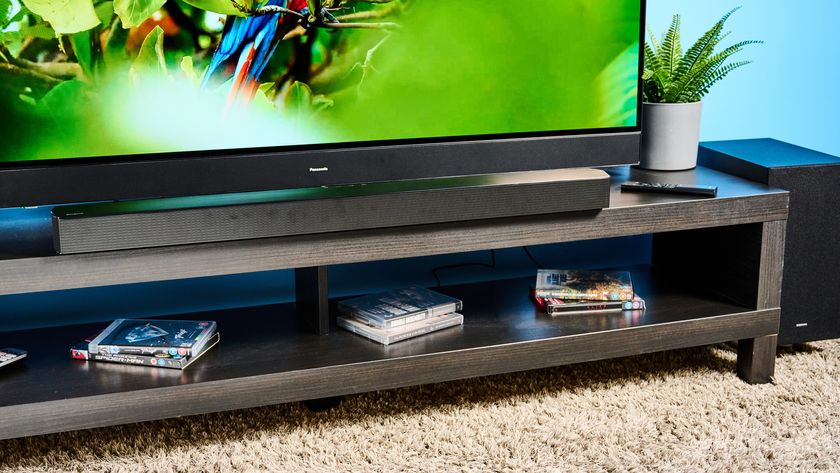
-
w-ow11 Apple Iphone x $1300 dollar phone and it wont pick up any other tv then apple to screen mirroring. this needs to be changed.Reply -
w-ow11 Reply21329873 said:The iPhone Xs is faster and takes better pictures than its predecessor, but the iPhone Xs Max hogs the spotlight with its ginormous 6.5-inch display.
iPhone Xs Max and iPhone Xs Review: This Is Obscene : Read more
sad thing we paid more for the i phone x and the cheaper one is better than the expensive one. -
russellajones In depth review but slanted in favour of the iPhone. journalism, eg:Reply
"The iPhone Xs Max is the phone to get if you want longer endurance. On the Tom's Guide Battery Test, which involves continuous web surfing over LTE on 150 nits of screen brightness, the iPhone Xs Max lasted a very good 11 hours and 30 minutes"... "The Pixel 2 XL lasted an even longer 12:09"
Surely the pixel 2 xl is the phone to get if you want longer endurance? -
philworthington Yes, the Pixel 2 is the oldest phone, and still wins on camera, battery life, Assistant (Siri is just a toy), and no notch - and is half the price.Reply
Slanted? This article is practically vertical. -
russellajones In addition the article is incorrect. The first 7nm mobile phone chip was announced by Huawei...Reply
-
nathanpridemore Biased. Just look at the Note 9 review in comparison. "The bad: expensive" but if course that's not a negative for the iPhone because it's an apple product... FunnyReply -
philworthington So, the Pixel 2 has a better battery and camera, it has Google Assistant rather than Siri and is half the price - oh and no notch.Reply
Glad to see the iPhone opens Fortnite faster though, so I guess that's the reason to pay twice the money. -
mr.ected > In addition the article is incorrect. The first 7nm mobile phone chip was announced by Huawei...Reply
There's a difference between "announced" and delivered. -
mr.debansu As the technology is advancing day by day it should be cheaper! We are wasting our hard earning after these brands only for passion and they are looting the profit.Reply -
xerces9 From the article:Reply
Are those values correct?21329873 said:Downloads reached as high as 103 Mbps
Uploads on the iPhone XS averaged 18.6 Mbps
My old iPhone SE gets 76 Mbps down and 29 Mbps up on LTE (measured by the speedtest.net app)
